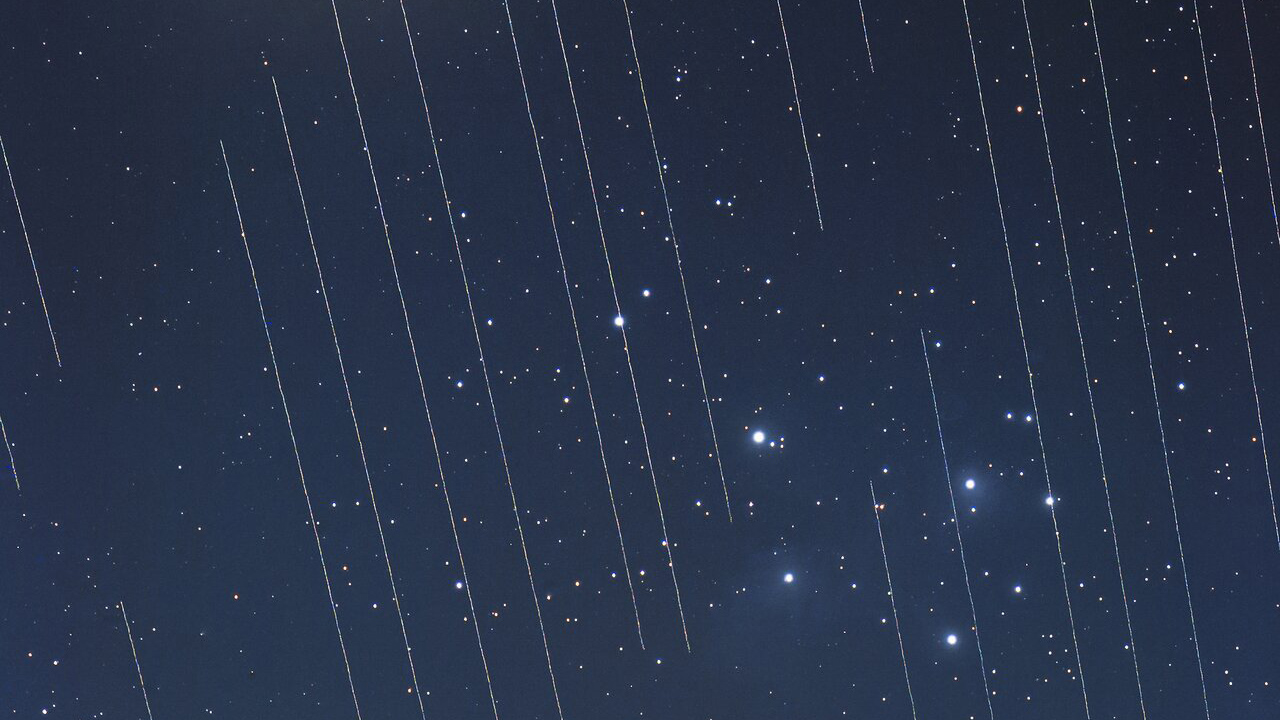International Astronomical Union launches new center to fight satellite megaconstellation threat
There is nowhere to hide from megaconstellation interference.

The International Astronomical Union (IAU) has launched a new center to fight the threat of satellite megaconstellations, which it now describes as worse than urban light pollution.
The Center for the Protection of the Dark and Quiet Sky from Satellite Constellation Interference will be run jointly by the U.K.-headquartered Square Kilometer Array Observatory organization and the U.S. National Science Foundation's National Optical-Infrared Astronomy Research Laboratory (NOIRLab).
Both of these organizations are dealing firsthand with the fallout of the megaconstellation boom. The next-generation observatories these two institutions are currently developing (the world's largest radio astronomy array built by SKAO on two sites in Australia and South Africa and NOIRLab's Vera C. Rubin Observatory in Chile) will have their observations compromised by the satellite interference, the organizations revealed previously in separate statements.
Speaking at the press briefing announcing the new center, former IAU General Secretary and the center's director Piero Benvenuti said megaconstellations now present a worse threat to astronomy than light pollution.
"In the past, the main source of interference was the light pollution produced by the urban illumination, the so-called artificial light at night," Benvenuti said. "But more recently, the impact of the large constellations of communication satellites became a more serious concern because of their ubiquitous invasiveness."
While in the past the remote deserts of Chile, Australia or South Africa could provide a refuge from the world's bright lights and buzzing communication networks, there is nowhere for the astronomers to hide from the thousands of satellites circling the planet.
Breaking space news, the latest updates on rocket launches, skywatching events and more!
"By the end of the decade, more than 5,000 satellites will be above the horizon at any given time," Connie Walker, a scientist at NOIRLab and one of the codirectors of the new center, said in the briefing. "At a typical dark sky observatory location, a few hundred to several thousand of these satellites will be illuminated by the sun."
These satellites, she added, will be detectable even by the smallest optical and infrared telescopes.
Moreover, the amount of metal orbiting Earth will reflect so much light that the night sky will brighten up enough for the telescopes to notice, making observations of the most distant and dimmest stars and galaxies difficult.

SKAO, which measures faint radio signals coming from distant stars, galaxies and planets, will be partially blinded in the frequency bands in which these satellites downlink their data, Federico di Vruno, SKAO's radio interference manager and a codirector of the new center, told Space.com in an earlier interview. The search for traces of life, the hunt for exoplanets as well as the study of the most distant universe will all be affected, he said.
The new center aims to bring together the astronomical community with the megaconstellation operators and regulators to help find solutions to protect ground-based astronomy as the number of satellites circling the planet grows.
Since 2019, SpaceX has launched over 2,000 of its internet-beaming Starlink satellites, only one-sixth of its envisioned first-generation constellation and a small fraction of the 42,000 satellites it has permission to launch. Its competitor OneWeb plans a constellation of about 2,000 satellites. Other players, including Amazon CEO Jeff Bezos and a Chinese state-backed consortium plan to build megaconstellations as well.
Astronomers grasped the problem soon after the launch of the first batch of Starlink satellites. While many amateur skywatchers were mesmerized by the "strings of pearls" traveling across the sky after each launch, the professional community understood that major problems were ahead.
Two years later, the IAU called for the establishment of the center. The union also started discussions with the United Nations to protect the pristine night sky as human heritage.
While some of the approaches to be developed by the new center will focus on software and technical mitigation solutions to be implemented on the side of the observatories, the astronomers also hope that megaconstellation operators will agree to make adjustments on their satellites to reduce the impact. SpaceX has previously trialled two such approaches — the DarkSat and the VisorSat — to reduce the satellite's glow.
Follow Tereza Pultarova on Twitter @TerezaPultarova. Follow us on Twitter @Spacedotcom and on Facebook.

Tereza is a London-based science and technology journalist, aspiring fiction writer and amateur gymnast. She worked as a reporter at the Engineering and Technology magazine, freelanced for a range of publications including Live Science, Space.com, Professional Engineering, Via Satellite and Space News and served as a maternity cover science editor at the European Space Agency.
